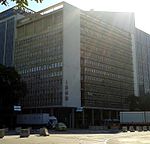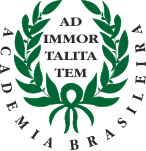Monument to the Dead of World War II
Brazil in World War IIMausoleums in BrazilModernist architecture in BrazilMonuments and memorials in Rio de Janeiro (city)National heritage sites of Rio de Janeiro (state) ... and 2 more
World War II cemeteriesWorld War II memorials

The Monument to the Dead of World War II (Portuguese: Monumento Nacional aos Mortos da Segunda Guerra Mundial), also the Monument to the Brazilian Soldiers of World War II, commemorates Brazil's participation and losses in the Second World War (WWII). It is located in Flamengo Park (also known as Aterro do Flamengo and Parque Eduardo Gomes) on Guanabara Bay, in the Flamengo neighborhood of Rio de Janeiro, Brazil.
Excerpt from the Wikipedia article Monument to the Dead of World War II (License: CC BY-SA 3.0, Authors, Images).Monument to the Dead of World War II
Avenida Infante Dom Henrique, Rio de Janeiro Glória (Zona Central do Rio de Janeiro)
Geographical coordinates (GPS) Address Phone number Website External links Nearby Places Show on map
Geographical coordinates (GPS)
| Latitude | Longitude |
|---|---|
| N -22.916666666667 ° | E -43.173611111111 ° |
Address
Monumento Nacional aos Mortos da Segunda Guerra Mundial
Avenida Infante Dom Henrique 75
20021-140 Rio de Janeiro, Glória (Zona Central do Rio de Janeiro)
Rio de Janeiro, Brazil
Open on Google Maps










